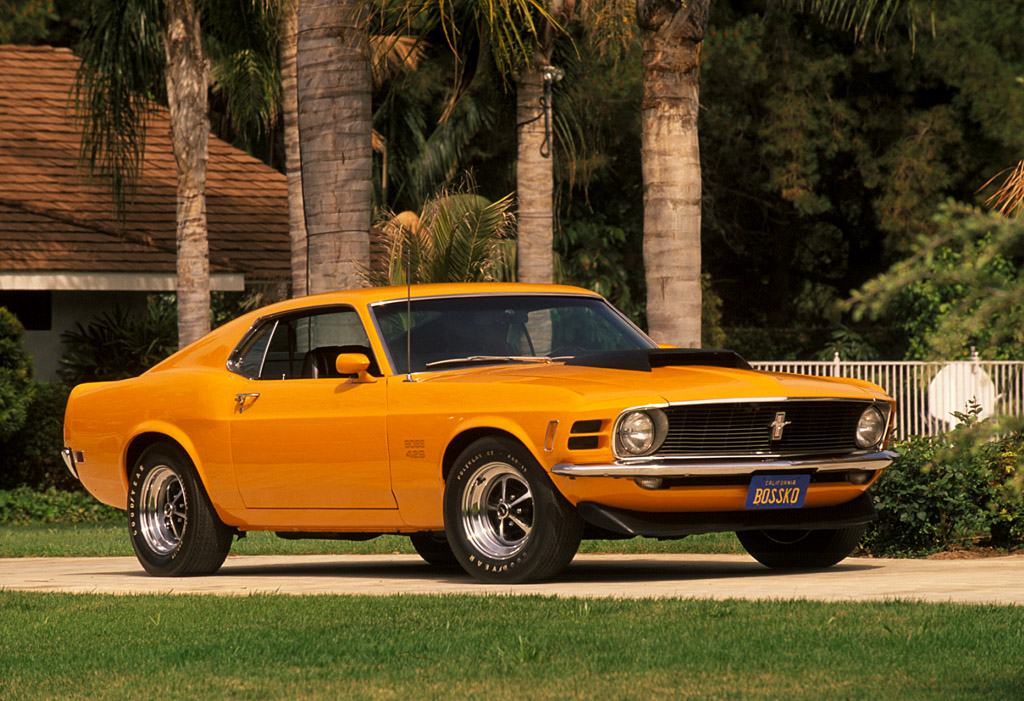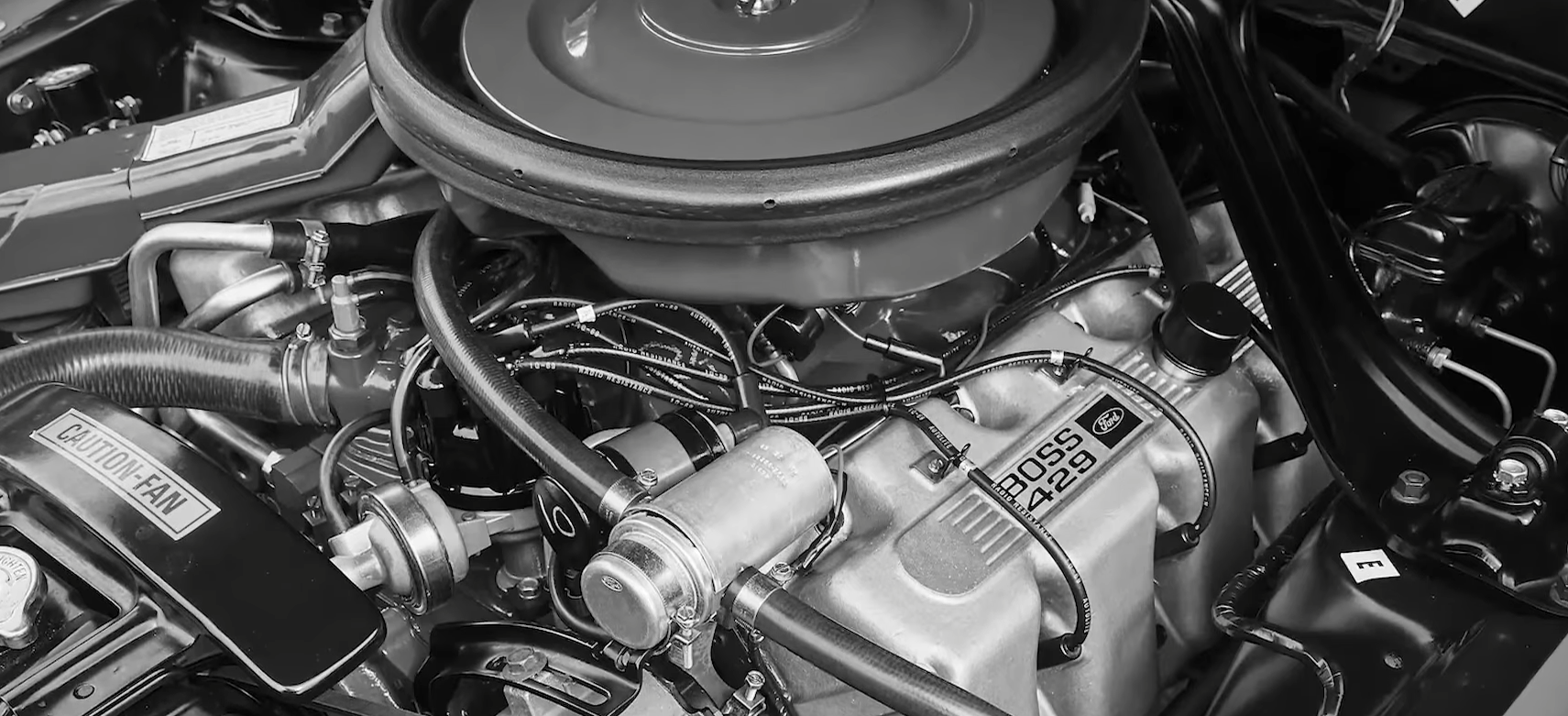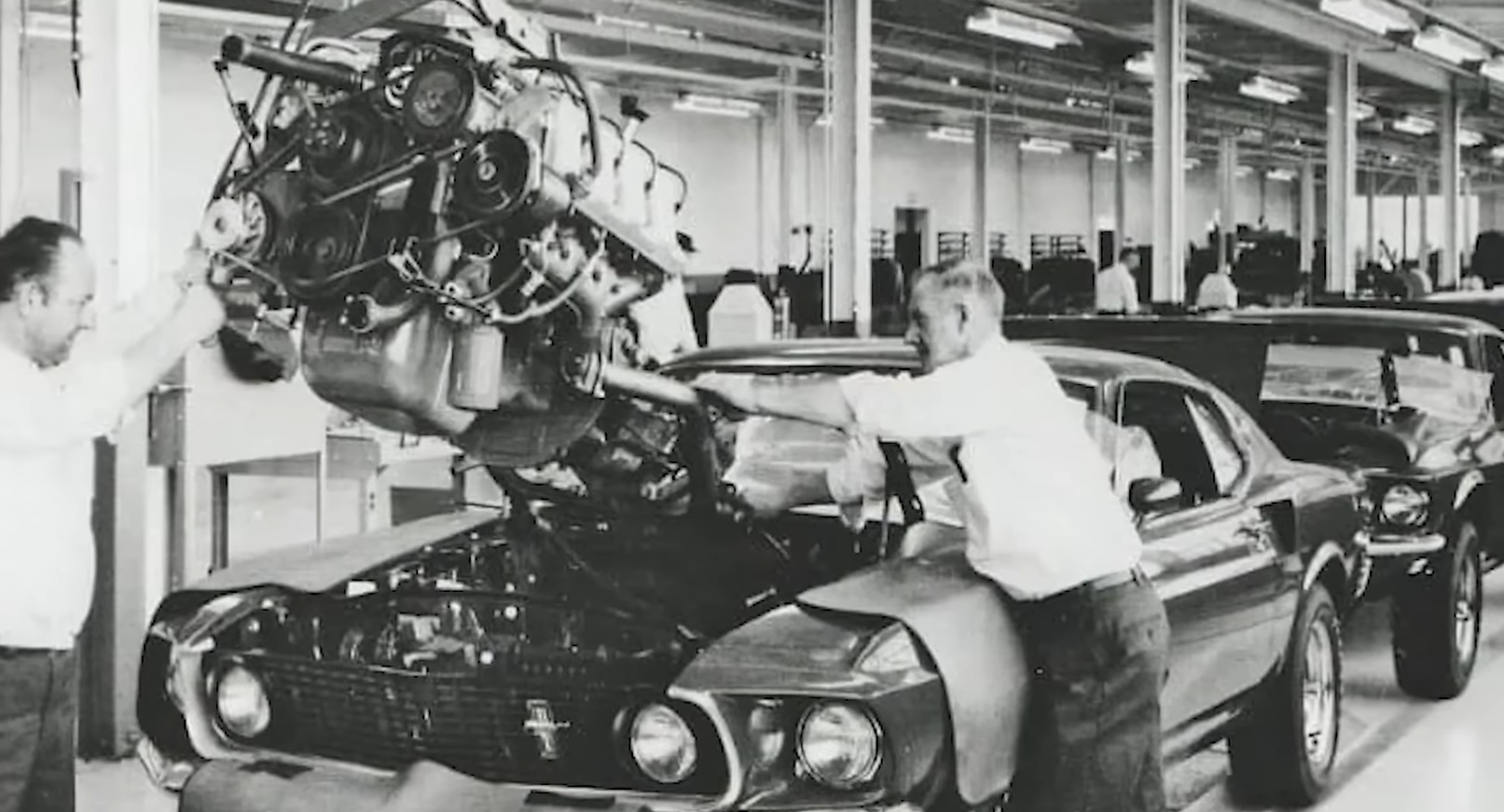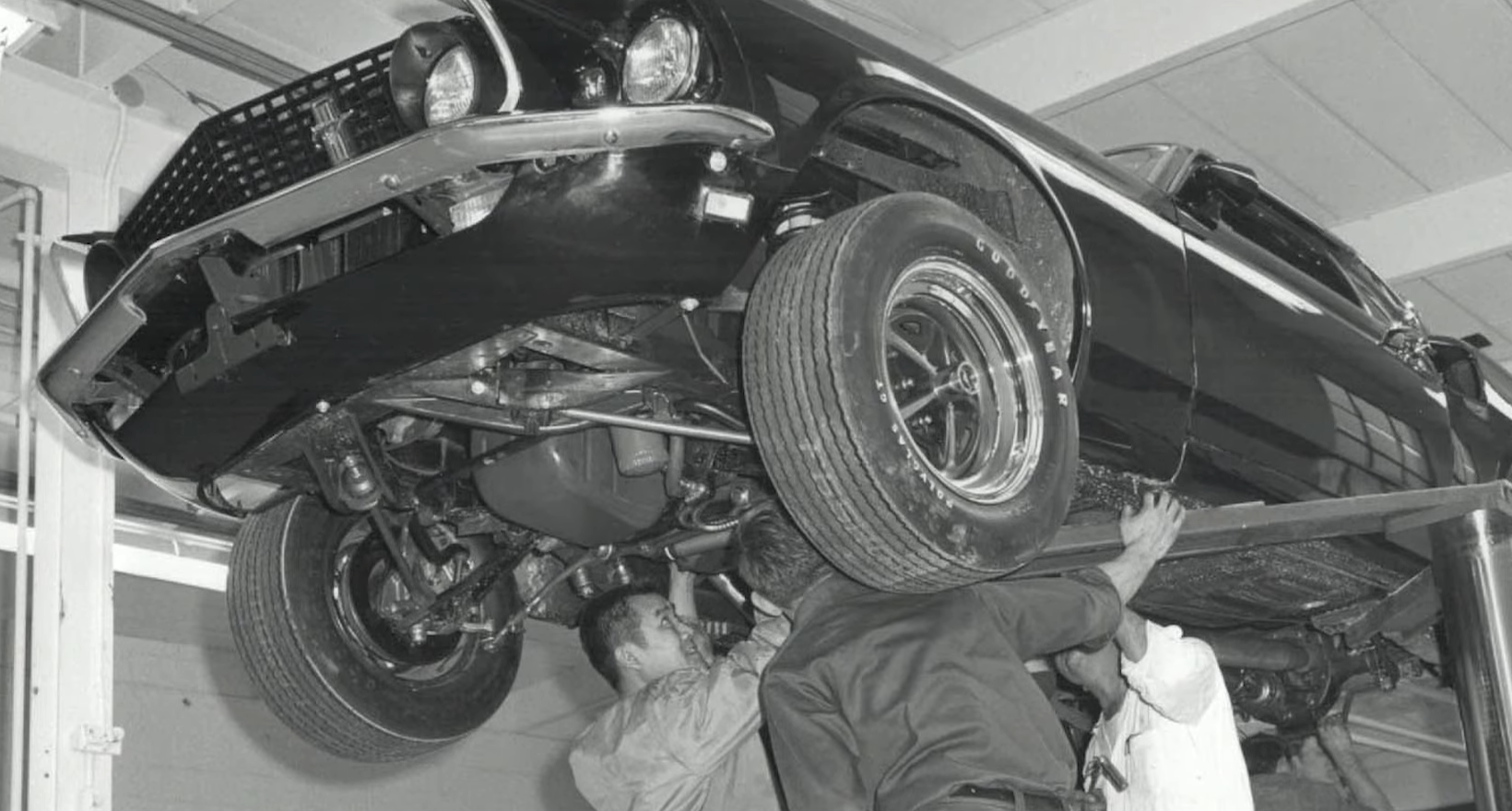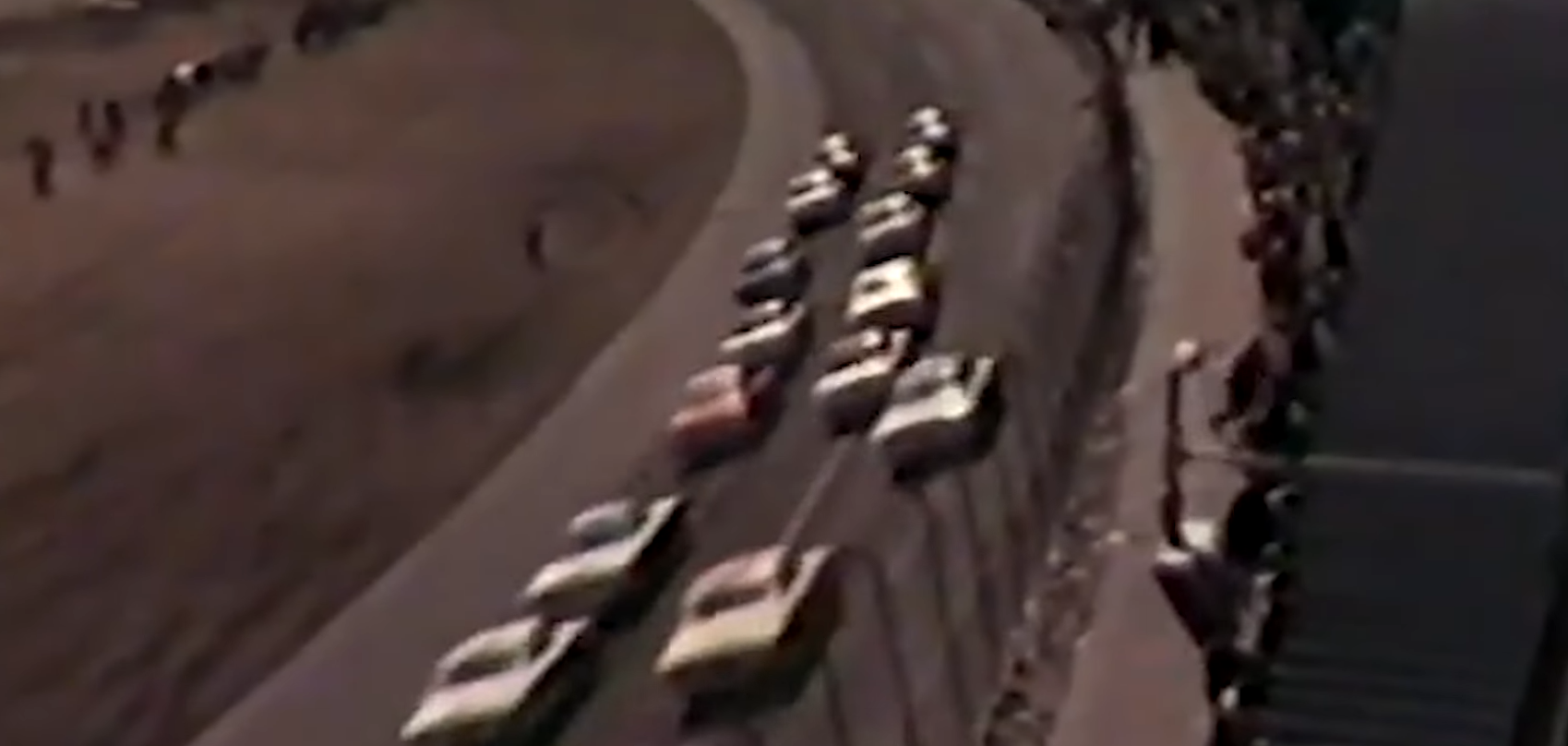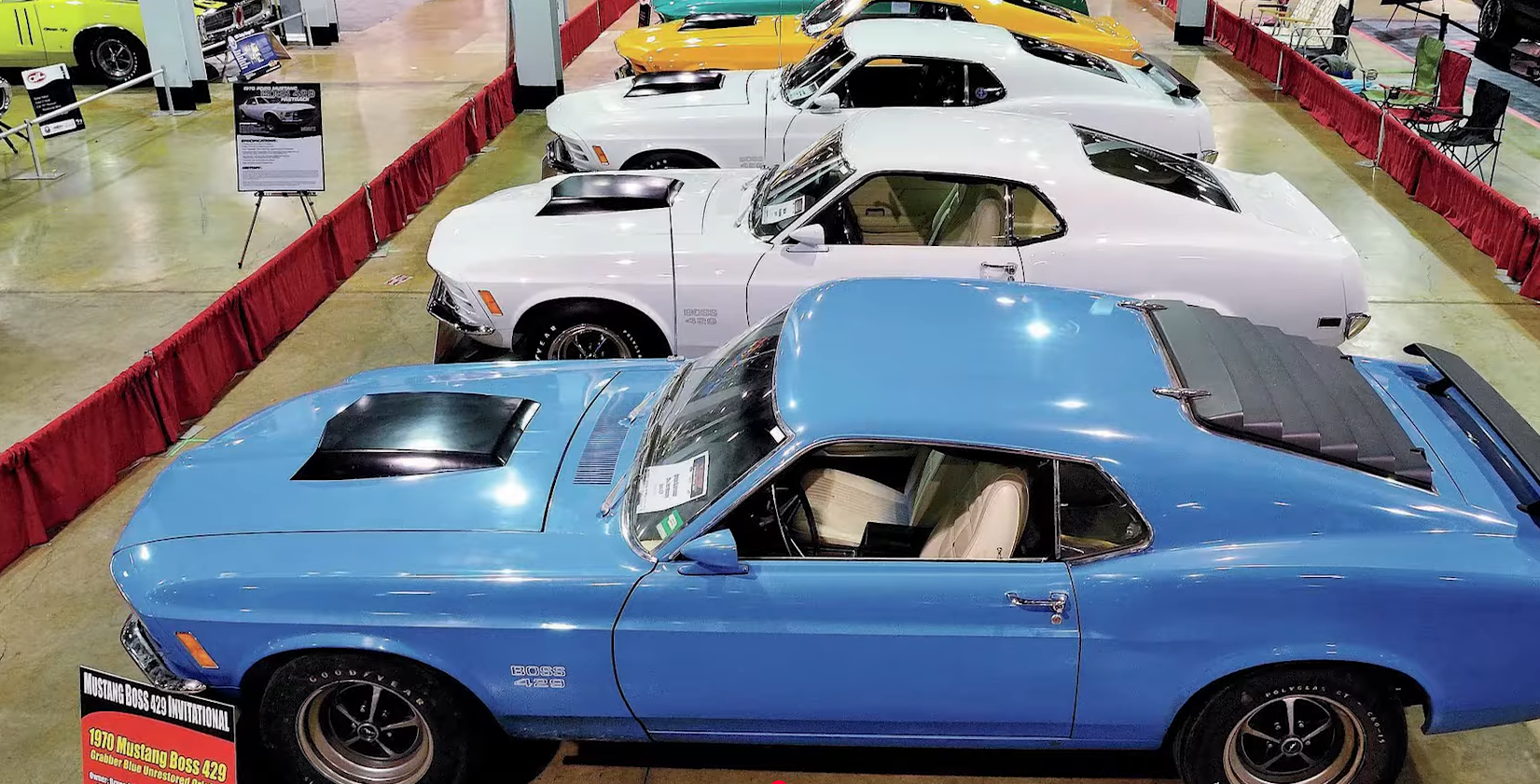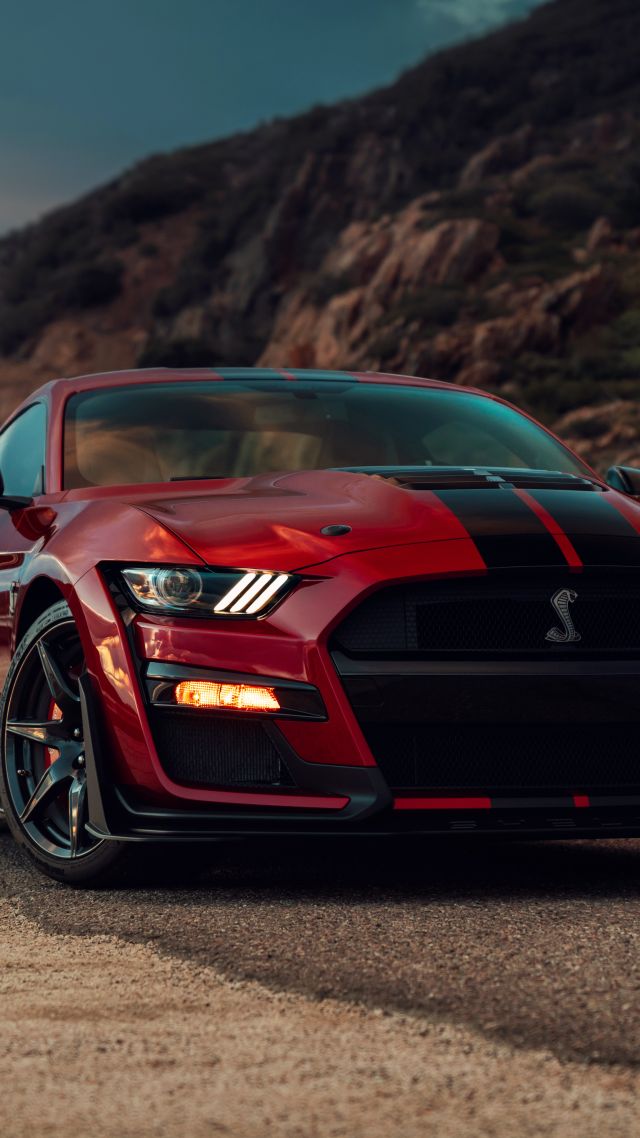Ford’s Boss 429 Mustang began as a solution to a racing problem, not a desire to build another street car. In the late 1960s, NASCAR required that engines used on the track also be available in production cars. Ford’s new 429 cubic inch engine was powerful but too large for a standard Mustang. To meet the rules, engineers reworked the car’s structure so the massive engine could fit, creating a limited run of hand-modified Mustangs built more for compliance than comfort.
Although the Boss 429 looked like a muscle car, it behaved more like a race machine adapted for the street. Its heavy front end, high cost, and modest low-speed performance limited its appeal to everyday drivers. Yet its advanced engineering and short production run made it one of the rarest and most respected Mustangs ever built.
Key Takeaways
- Ford built the Boss 429 to meet NASCAR’s production requirements.
- The car’s design focused on fitting a large racing engine into a street body.
- Its rarity and engineering make it highly valued among collectors today.
Origins Of The Boss 429
NASCAR Production Requirements
In the late 1960s, NASCAR required that any engine used in competition also be sold in a production car. Automakers had to build at least 500 street-legal vehicles equipped with the same engine to qualify. This rule kept racing connected to real consumer cars and ensured that race engines were not one-off prototypes.
| Requirement | Purpose | Minimum Quantity |
|---|---|---|
| Production-based engine | Maintain connection to consumer cars | 500 units |
Ford’s Racing Problem
Ford’s new 429-cubic-inch engine was performing exceptionally well in NASCAR testing, outpacing rival engines like Chrysler’s 426 Hemi. To make it race-legal, Ford needed to install it in a production vehicle. The engine’s large size created a challenge—it wouldn’t fit in a standard Mustang without major changes. Ford turned to Carcraft, a specialty builder in Michigan, to modify the Mustang’s front end and suspension to handle the oversized motor.
Key modifications included:
- Widened shock towers
- Relocated battery to the trunk
- Heavy-duty suspension and brakes
These changes transformed the Mustang into a limited-production car built specifically for NASCAR approval.
Building The 429 Powerplant
The Boss 429 engine featured aluminum cylinder heads with a hemispherical design that improved airflow at high RPM. Ford rated it at 375 horsepower, though the real figure was likely higher. The company intentionally listed a lower number to avoid high insurance costs for buyers.
In racing form, the same engine produced over 600 horsepower. Ford built 859 units in 1969 and 500 more in 1970, all fastback Mustangs. Each car represented a blend of racing technology and street legality, created solely to qualify the 429 engine for NASCAR competition.
Engineering and Design
Powertrain Details
Ford equipped the car with a 429-cubic-inch V8 that shared its core design with the company’s NASCAR engines. It used aluminum cylinder heads shaped for high airflow and a deep valve angle that improved breathing at high speeds.
| Specification | Detail |
|---|---|
| Displacement | 429 cu in (7.0 L) |
| Rated Output | 375 hp (factory rating) |
| Actual Potential | Over 600 hp in racing trim |
| Cylinder Head Material | Aluminum |
| Combustion Chamber | Crescent-shaped, hemi-style |
| Model Years | 1969–1970 |
Ford listed the car at 375 horsepower to keep insurance costs down, but the engine’s true capability far exceeded that figure. The street version used a milder camshaft and restrictive exhaust, but its strong bottom end and cylinder design made it a solid base for racing.
Mustang Reengineering
Fitting the large 429 engine into the Mustang required heavy structural changes. The shock towers were cut and moved outward, and the battery was relocated to the trunk. Engineers added a reinforced suspension, power front disc brakes, and heavy-duty springs and shocks.
Key structural updates included:
- Wider engine bay for clearance
- Strengthened front suspension mounts
- Relocated battery for better space management
- Revised cooling and braking systems
These modifications gave the Mustang the strength to handle the engine’s weight and power, though it also made the car nose-heavy and less agile than smaller-engine models.
Carcraft’s Specialized Build
Ford turned to Carcraft Company in Michigan to perform the conversions. Carcraft received unfinished Mustang fastbacks straight from the factory and reworked each one by hand. Every car went through a semi-custom process rather than a standard assembly line.
Each vehicle received:
- Custom front-end fabrication
- Installation of the 429 engine
- Suspension and brake upgrades
- Unique “Boss 429” identification and trim
The process was expensive and time-consuming, but it allowed Ford to meet NASCAR’s homologation requirement. Only 1,359 units were built over two years, making the Boss 429 one of the rarest and most specialized Mustangs produced.
Production and Rarity
Model Years and Output
Ford produced the Boss 429 Mustang for two years—1969 and 1970. The first run totaled 859 cars, while the second added 500 more, bringing total production to 1,359 units. All were built with the sports roof fastback body style. No convertibles or hardtops were offered.
| Year | Units Built | Body Style | Notable Updates |
|---|---|---|---|
| 1969 | 859 | Sports Roof | Initial production; engine bay reworked by Carcraft |
| 1970 | 500 | Sports Roof | Added hood scoop and new graphics |
Each car went through a semi-custom build process. Carcraft modified the front suspension and engine bay to fit the oversized 429 engine, making every unit labor-intensive and costly to produce.
Distinctive Design and Equipment
The Boss 429 carried aluminum cylinder heads with a crescent-shaped combustion chamber, a design inspired by racing technology. Ford relocated the battery to the trunk, added power front disc brakes, and installed heavy-duty suspension components.
The model came only in selected colors and featured unique exterior decals, special identification badges, and a functional hood scoop on later cars. The engine was officially rated at 375 horsepower, though it was capable of much more in racing form.
Cost and Market Standing
The Boss 429’s price started around $4,900 in 1969, roughly $1,500 higher than a Boss 302 and nearly double a base Mustang. The extra cost reflected the hand-built modifications and NASCAR-derived engine.
| Model | Base Price (1969) | Difference |
|---|---|---|
| Base Mustang | ~$2,500 | — |
| Boss 302 | ~$3,400 | +$900 |
| Boss 429 | ~$4,900 | +$1,500 over Boss 302 |
Because of its limited production and specialized purpose, the Boss 429 became one of the rarest and most valuable Mustangs. Collectors prize it today for its connection to Ford’s racing history and its short, distinctive production run.
Performance and Driving Experience
Street Driving Trade-Offs
The Boss 429 looked powerful but behaved differently on public roads. Its large racing engine was tuned softly for street use, which made it feel sluggish at low speeds. Drivers often noticed that the smaller 428 Cobra Jet felt quicker in normal driving. The Boss 429 only came alive at high RPM, where its NASCAR roots showed.
| Feature | Effect on Street Use |
|---|---|
| Mild camshaft | Smooth idle but slower throttle response |
| Restrictive exhaust | Reduced noise but limited power |
| Heavy front end | Affected balance and cornering feel |
Steering and Balance Characteristics
The engine’s weight changed how the Mustang handled. Even with upgraded springs, shocks, and power disc brakes, the car carried more weight over the front wheels. This made it push through corners with noticeable understeer. Compared to the lighter Boss 302, the 429 felt less agile and more nose-heavy. Drivers needed to plan turns carefully, especially at higher speeds.
Fuel Use and Efficiency
Fuel economy was poor. Most owners reported single-digit miles per gallon in city driving. The large 429 cubic inch engine consumed fuel quickly, even when driven gently. Its design focused on racing endurance, not efficiency. Owners accepted the cost because the car offered access to genuine NASCAR engineering, even if that meant frequent stops at the gas station.
Racing Legacy
NASCAR Performance
Ford developed the Boss 429 engine for one reason—NASCAR competition. The engine’s design focused on high-RPM power and endurance, not street comfort. Teams used it in Ford Torinos during the 1969 and 1970 seasons, where its aluminum heads and deep valve angles helped it breathe better than many rivals.
Highlights:
- Over 600 horsepower in full racing trim
- Used in Ford Torino race cars
- Designed for sustained high-speed performance
David Pearson’s 1969 season proved the engine’s value when he captured the NASCAR Championship with 11 wins. Other drivers like Cale Yarborough and Donnie Allison also ran 429-powered Fords, keeping the brand competitive through the early 1970s.
Notable Drivers and Accomplishments
Ford’s NASCAR lineup featured several standout drivers who maximized the 429’s strengths.
| Driver | Year | Wins | Notable Achievement |
|---|---|---|---|
| David Pearson | 1969 | 11 | NASCAR Grand National Champion |
| Cale Yarborough | 1970 | Multiple top finishes | Consistent contender in Ford’s 429 program |
| Donnie Allison | 1970 | Several podiums | Helped refine Ford’s race setup |
Their success showed that Ford’s investment in the Boss 429 program produced real results on the track, even if the street version felt less lively.
Rival Comparisons
Ford’s 429 faced strong competition from Chrysler’s 426 Hemi and Chevrolet’s big-block V8s. The 429’s aluminum heads gave it a weight advantage over Chrysler’s cast-iron design, improving balance and cooling. Its deeper valve angle allowed better airflow at high RPM, an edge on long oval tracks.
| Engine | Material | Approx. Power (Race Trim) | Key Strength |
|---|---|---|---|
| Ford 429 | Aluminum | 600+ hp | High-RPM breathing, lighter weight |
| Chrysler 426 Hemi | Cast Iron | 600+ hp | Proven durability, strong torque |
| Chevrolet 427 | Cast Iron | 550–600 hp | Broad powerband, reliable setup |
While each engine had strengths, Ford’s 429 proved that innovation and precision engineering could match or exceed its rivals in NASCAR’s most competitive years.
Collectibility And Value
Scarcity in the Market
Only 1,359 Boss 429 Mustangs were ever built, making them among the rarest production Fords. Each car required custom modifications by Carcraft, which reworked the chassis and engine bay by hand. Because of this limited and labor-intensive production, collectors view them as low-volume, high-importance vehicles.
| Model Year | Units Produced | Key Differences |
|---|---|---|
| 1969 | 859 | Original design, conservative tune |
| 1970 | 500 | Added hood scoop, new graphics |
Few survive in original condition, and those that do often command the highest attention at auctions.
Historical Importance
The Boss 429 exists because NASCAR rules required Ford to sell its race engine in a street car. This connection to professional racing gives the model lasting historical weight. It represents a time when automakers built cars not for comfort or profit, but to meet competition standards.
The engine’s success on the track, including David Pearson’s 1969 NASCAR Championship, reinforces its legacy. The car’s short production run and direct link to that racing era make it a symbol of late-1960s performance engineering.
Elements Behind Rising Prices
Several factors drive the Boss 429’s high value:
- Authenticity: Cars with matching numbers and original components bring premium prices.
- Condition: Restored or well-preserved examples can exceed $500,000.
- Provenance: Documented ownership and factory records add credibility.
- Performance Heritage: Its NASCAR roots and advanced engine design appeal to serious collectors.
Buyers pay for more than power—they pay for a piece of Ford’s racing history that can no longer be replicated.


